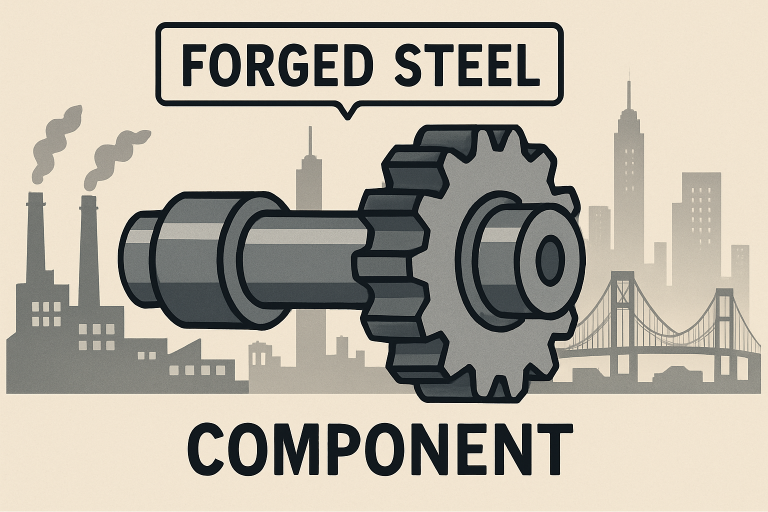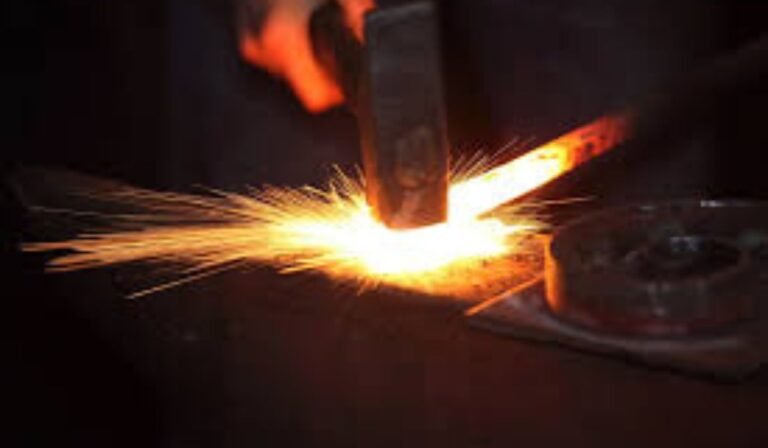Why Forged Steel Matters
Forged steel stands as the backbone of modern industry, powering everything from massive infrastructure projects to intricate machinery. Its unmatched combination of strength, durability, and workability has made it an essential material across diverse applications.
Companies seeking reliability in components often turn to suppliers with a proven track record, such as a reputable forged steel valve manufacturer, to ensure their systems can withstand the most demanding environments. The global adoption of forged steel stems from its ability to perform under extreme stress and conditions.
Whether it’s supporting towering skyscrapers or operating within the engines of aircraft, forged steel delivers reliable performance where failure is not an option. Top manufacturers continue to innovate, combining traditional craftsmanship with cutting-edge technologies to meet growing industrial demands. As industries evolve, the pursuit of stronger, longer-lasting, and more sustainable steel solutions remains relentless.
The Forging Process In Simple Terms
At its core, forging is a process that transforms the structure and properties of steel. By heating raw steel to high temperatures and shaping it under immense pressure, the grain structure is realigned and refined. This process improves the mechanical properties of steel, resulting in components with enhanced strength, fatigue resistance, and structural integrity.
Unlike casting or machining, forging significantly reduces internal defects, ensuring the safety and longevity of vital components. Modern forging methods, such as open-die and closed-die forging, offer precise control over material properties and final component shapes.
The result is a product that not only meets but often exceeds the rigorous standards required by sectors like aerospace and energy. For a detailed look at the science of forging, resources from leading institutions such as NIST Metallurgy offer valuable insights into ongoing metallurgical advancements.
Primary Industries That Rely On Forged Steel
Forged steel is omnipresent in industries where performance and safety are critical. The automotive industry uses forged components for crankshafts, connecting rods, and gears—vital for handling the stresses of engine operation.
Aerospace relies on forged steel for aircraft landing gear and structural elements. At the same time, the construction sector employs it in beams, columns, and critical joints that form the backbone of urban infrastructure. Energy production, including nuclear, oil, and gas industries, demands forged steel for wind turbine shafts, pipeline fittings, and pressure vessels.
Even the mining and heavy equipment sectors depend on forged steel’s resilience to maintain productivity under extreme wear and tear. These sectors continually push suppliers to innovate faster and manufacture components that meet rising performance benchmarks.

Innovation In Forging Technology
The forging industry is experiencing a transformation powered by digital innovation and new materials. Computer-aided process design allows engineers to simulate and optimize component shaping, ensuring each part is forged to perfection.
The adoption of automated forging presses, advanced die materials, and improved temperature regulation has led to unprecedented precision. Engineers increasingly experiment with novel alloying elements, creating steels that resist corrosion, withstand extreme temperatures, and minimize weight without sacrificing strength.
Surface treatments, such as induction hardening and nitriding, extend the service life of forged components, saving costs and resources over time. Continuous research and development have allowed manufacturers to address specific industry needs, reflecting how contemporary demands shape the future of forging technology.
Quality Assurance And Testing
Robust quality assurance protocols are vital in the production of forged steel parts. Ultrasonic testing, magnetic particle inspection, and X-ray analysis are widely used to identify internal or surface-level defects before products reach the market.
Specialized testing laboratories often subject samples to simulated stress environments, ensuring parts exceed real-world operational requirements. This level of scrutiny is essential for applications where public safety and reliability are critical, such as in bridges, power plants, and aviation systems. Industry standards from organizations like ASTM and ISO continue to evolve, setting benchmarks for manufacturers to assure customers of the highest quality.
Sustainability And The Environment
As environmental awareness increases, forging processes are evolving to minimize ecological impact. Precision and closed-die forging techniques reduce excess material waste, while energy-efficient furnaces and process automation lower overall energy consumption.
Leading manufacturers are prioritizing recycling, utilizing steel scrap for new production runs, and implementing greener process controls. Ongoing research explores how alternative energy sources and carbon reduction initiatives can integrate with large-scale forging operations.
The forged steel industry is also working collaboratively with regulatory bodies to meet stricter emissions standards and promote circular manufacturing practices. The race towards low-carbon steel is set to transform how foundational materials like forged steel are produced worldwide.
Real-World Examples Of Forged Steel Infrastructure
Forged steel’s reliability is best illustrated in the real world. Skyscrapers rely on forged beams to bear immense structural loads, while bridges use forged pins, bolts, and joints for support and resilience across decades of exposure.
In the transportation sector, forged components in locomotives, ships, and heavy trucks provide the durability needed for global commerce to thrive. Even municipal infrastructure—such as water treatment plants, dams, and power stations—benefits from the longevity of forged valves, pipes, and fittings.
Projects documented in industry publications show that some forged steel components safely operate for over 50 years with only basic maintenance, emphasizing their unmatched return on investment.
Future Trends And Opportunities
The future of the forged steel sector is dynamic, driven by the need for sustainable, high-performance materials. Ongoing alloy research, combined with digitized manufacturing, is opening new possibilities for lightweight yet ultra-strong steel components.
Artificial intelligence is playing an increasing role in quality control, predicting potential defects before they arise, and optimizing production workflows. As global industries move toward green technology and smarter infrastructure, the demand for advanced forged steel components continues to rise.
Training and education for the next generation of engineers and metallurgists are ensuring that the advantages of forged steel remain at the forefront of industrial progress. With its unique blend of strength, sustainability, and adaptability, forged steel stands ready to face the challenges of tomorrow and remain a bedrock of innovation for decades to come.
